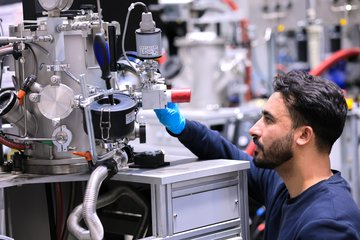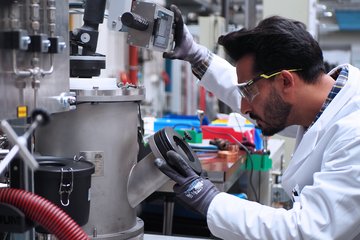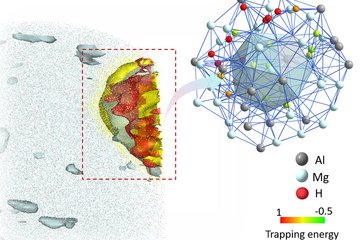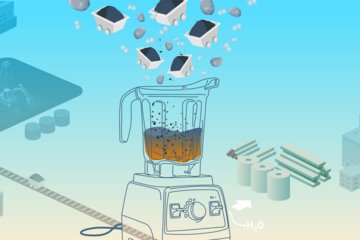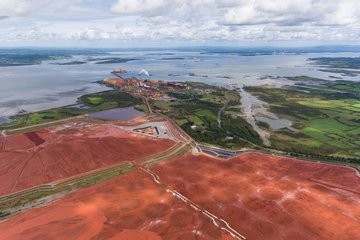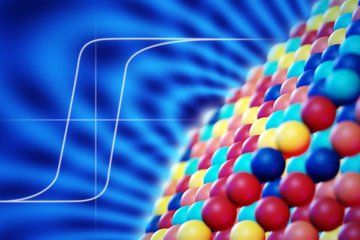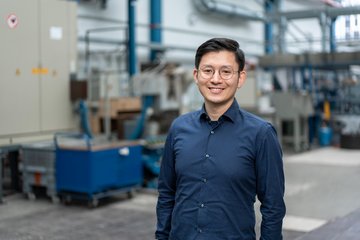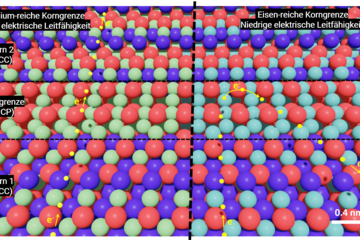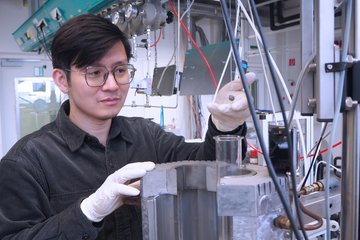Alle Typen
301.
Vortrag
Interfaces in magnesium alloys. PICS 2022, Marseilles, France (2022)
302.
Vortrag
Interfaces in functional materials: what can we learn from combining APT and TEM. PICS 2022, Marseilles, France (2022)
303.
Vortrag
Ruthenium-Platinum Core-Shell Nanoparticles as durable, CO tolerant catalyst for Polymer Electrolyte Membrane Fuel Cells. 5th International Caparica Symposium on Nanoparticles/Nanomaterials and Applications (ISN2A), Online (angenommen)
304.
Vortrag
Developing correlative and in situ microscopy to study structure-property relationships in thermoelectric materials. Modern electron microscopy and correlative techniques, online (2021)
305.
Vortrag
Tracing impurities at surfaces and interfaces of renewable energy materials. MS&T 21 , Online (2021)
306.
Vortrag
Parallel Dislocation Networks and Cottrell Atmospheres Reduce Thermal Conductivity of PbTe Thermoelectrics. Virtual Thermoelectric Conference 2021 (VCT 2021) (2021)
307.
Vortrag
Hematite for light induced water splitting – improving efficiency by tuning distribution of Sn dopants at the atomic scale. Karlsruher Werkstoffkolloquium_Digital (2021)
308.
Vortrag
Insights in the stability of Pt/Ru catalyst and the effect for polymer electrolyte membrane fuel cells. Thermec 2021, Online Conference (2021)
309.
Vortrag
Insights in the Structure, Defects and Stability of Mo2BC Thin Films by Advanced Characterization Methods. International Conference on Metallurgical Coatings and Thin Films 2021 (ICMCTF2021), Virtual Conference (2021)
310.
Vortrag
The devil is in the details: correlating SMSI catalyst encapsulation layers with electrochemical properties. ElecNano9 2020, online, Paris, France (2020)
311.
Vortrag
Atomic-scale characterization of complex solid solution nanoparticles using TEM. Workshop on High Entropy Alloy and Complex Solid Solution Nanoparticles for Electrocatalysis, RUB, online, Bochum, Germany (2020)
312.
Vortrag
Effect of microstructure on the thermoelectric properties of Ti(Co,Fe)Sb half Heusler. Virtual Thermoelectric Conference (VCT2020), USA (2020)
313.
Vortrag
Nanoparticle Specimen Preparation for Atom Probe: Chemical Fixation and… cryo-Fixation (?). TMS 2020 Annual Meeting & Exhibition, San Diego, CA, USA (2020)
314.
Vortrag
Detailed structure and chemistry of structural defects in PbTe based alloys. Virtual Thermoelectric Conference 2020 (VCT 2020) (2020)
315.
Vortrag
Co-organizer of the International Seminar Series on the Microstructure of Materials (on-line). International Seminar Series on the Microstructure of Materials, online (2020)
316.
Vortrag
How do grain boundaries transform on the atomic level? International Workshop on Advanced and In-situ Microscopies of Functional Nanomaterials and Devices, IAMNano 2019, Düsseldorf, Germany (2019)
317.
Vortrag
Detection of trace impurities and other defects in functional nanomaterials. International Workshop on Advanced and In-situ Microscopies of Functional Nanomaterials and Devices, IAMNano 2019, Düsseldorf, Germany (2019)
318.
Vortrag
Correlative tomography and electrochemical tests on single Pt/Ru catalyst networks. Microscopy Conference MC2019, Berlin, Germany (2019)
319.
Vortrag
How stable are thin Aluminium films: Dewetting phenomena observed by in-situ electron microscopy. Microscopy Conference 2019 (MC2019), Berlin, Germany (2019)
320.
Vortrag
Fundamentals and Applications of Electron Energy-Loss Spectroscopy in a Scanning Transmission Electron Microscope. Universita' Roma Tre Colloquium, Roma, Italy (2019)
